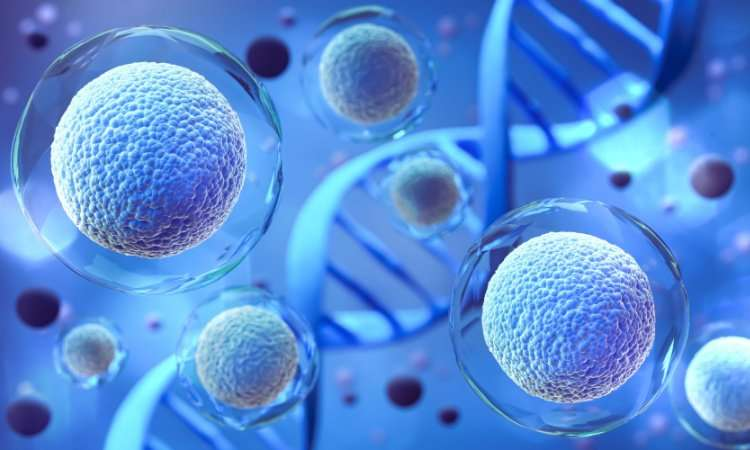
Regenerative medicine has revolutionized the way we approach healing and recovery in the modern world. With its innovative techniques, this branch of medicine harnesses the body’s own natural processes to repair, replace, or regenerate damaged tissues and organs. Unlike traditional treatments that primarily focus on alleviating symptoms, regenerative medicine seeks to address the root cause of injury or disease by stimulating the body’s inherent ability to heal itself. As a result, it offers exciting potential for a wide range of medical conditions, from chronic pain to severe tissue damage. At the heart of this transformation lies regenerative medicine, which is reshaping the future of healthcare.
Understanding the Basics of Regenerative Medicine:
Regenerative medicine in Dubai(الطب التجديدي في دبي) involves a collection of medical therapies designed to promote tissue regeneration, rather than just treating symptoms. The field focuses on using cellular therapies, stem cells, and biomaterials to repair or replace damaged tissues and organs. By utilizing the body’s own repair mechanisms, regenerative medicine can help restore normal function to damaged areas without the need for invasive surgeries. This form of treatment is particularly beneficial for patients with conditions such as osteoarthritis, heart disease, and neurological disorders.
In regenerative medicine, stem cells are often at the forefront, offering immense potential for healing. These cells have the unique ability to differentiate into various types of tissues, including muscle, cartilage, and bone, enabling them to aid in repairing damaged organs and tissues. Stem cell therapy, along with platelet-rich plasma (PRP) treatments, has gained significant attention for its capacity to heal and regenerate injured tissues.
Stem Cell Therapy: A Game Changer in Healing
One of the most widely researched and applied techniques in regenerative medicine is stem cell therapy. Stem cells possess the remarkable ability to transform into various types of cells, which allows them to replace damaged or diseased tissues. This regenerative process is particularly beneficial for individuals suffering from conditions such as spinal cord injuries, arthritis, and heart disease, where traditional treatments have limited effectiveness.
The two primary types of stem cells used in regenerative medicine are embryonic stem cells and adult stem cells. Embryonic stem cells are derived from early-stage embryos, while adult stem cells are found in various tissues throughout the body. Both types have the potential to differentiate into specialized cell types, making them valuable in repairing damaged tissues. In recent years, advances in stem cell research have enabled scientists to develop more targeted therapies with greater efficacy, thus accelerating the healing process.
Platelet-Rich Plasma (PRP) Therapy: Harnessing the Power of Platelets
Platelet-rich plasma (PRP) therapy is another key innovation in regenerative medicine. This technique involves drawing a patient’s own blood, isolating the plasma that is rich in platelets, and injecting it back into the affected area. Platelets play a crucial role in the body’s natural healing process by promoting tissue repair and reducing inflammation.
PRP therapy has gained widespread use for treating musculoskeletal injuries, joint pain, and tendonitis. It has shown promise in accelerating healing times and improving recovery outcomes. By stimulating the body’s natural healing abilities, PRP therapy helps patients avoid invasive procedures and minimize downtime. This non-surgical approach offers a promising alternative to traditional treatments, particularly for athletes and individuals who wish to avoid prolonged rehabilitation periods.
The Role of Tissue Engineering in Regenerative Medicine:
Tissue engineering is a rapidly advancing field within regenerative medicine that focuses on creating biological substitutes to repair or replace damaged tissues. This involves the combination of cells, biomaterials, and bioactive molecules to form tissue structures that can mimic the function of natural tissues. Tissue engineering aims to create functional organs or tissues that can be used for transplantation or to restore damaged body parts.
One of the most exciting prospects in tissue engineering is the ability to create personalized, patient-specific tissue models. This approach allows for the development of customized treatments tailored to the individual’s specific needs. For example, researchers are exploring the creation of bioengineered skin for burn victims, or artificial cartilage for those with joint degeneration. These advancements are offering new hope to individuals with conditions that previously had few treatment options.
Advancements in Gene Therapy and Regenerative Medicine:
Gene therapy is another exciting frontier in regenerative medicine that is transforming the healing process. Gene therapy involves the introduction, removal, or alteration of genetic material within a patient’s cells to treat or prevent disease. By targeting the root cause of genetic disorders, gene therapy holds the potential to correct malfunctioning genes that lead to diseases and promote healing at the genetic level.
In regenerative medicine, gene therapy is being used to enhance the regenerative capacity of stem cells and other therapeutic approaches. For example, scientists are working on gene-editing techniques that could improve the effectiveness of stem cell treatments by increasing their ability to regenerate damaged tissues. By manipulating the genetic material of cells, researchers are paving the way for more efficient and targeted treatments that offer long-term benefits.
Benefits of Regenerative Medicine in Chronic Disease Management:
Regenerative medicine holds great promise for individuals suffering from chronic diseases, which often have limited treatment options. Traditional approaches to managing chronic conditions such as diabetes, osteoarthritis, and heart disease typically focus on symptom management and disease progression. However, regenerative medicine offers a more proactive solution by addressing the underlying causes of these diseases and promoting the body’s ability to repair itself.
For example, in the case of osteoarthritis, regenerative medicine techniques such as stem cell therapy and PRP injections have shown promise in reducing inflammation, regenerating damaged cartilage, and improving joint function. Similarly, in cardiovascular diseases, stem cells can be used to regenerate damaged heart tissue and improve circulation, potentially offering a more effective solution to heart failure. These treatments are not only enhancing quality of life but also providing new hope for patients who have exhausted conventional treatment options.
The Future of Regenerative Medicine:
The future of regenerative medicine is filled with exciting possibilities, as ongoing research continues to unlock new ways to harness the body’s natural healing powers. From the development of advanced tissue engineering techniques to breakthroughs in gene therapy, regenerative medicine is poised to transform the healthcare landscape. As these technologies evolve, we can expect to see more personalized, effective, and less invasive treatments for a wide range of medical conditions.
While there are still challenges to overcome, such as the need for more research and the development of standardized protocols, the potential benefits of regenerative medicine are undeniable. By addressing the root causes of diseases and promoting healing at the cellular level, regenerative medicine is changing the way we think about recovery and healthcare. As we move forward, regenerative medicine will continue to redefine the boundaries of medical science, offering new hope for patients worldwide.
Conclusion:
In conclusion, regenerative medicine is at the forefront of a medical revolution, offering innovative solutions that could transform the healing processes for a wide range of injuries and diseases. As research advances and new technologies emerge, regenerative medicine will likely become an integral part of healthcare, providing more effective, less invasive, and longer-lasting treatments.













